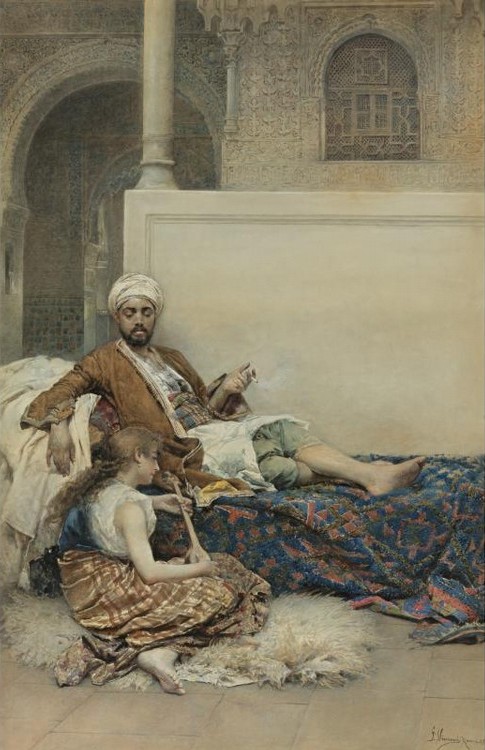Simoni Gustavo
There are no products to list.
Simoni Gustavo
Simoni Gustavo (1845-1926)
Gustavo Simoni ( Rome , 5 November 1845 - Palestrina , 1926 ) was a painter and teacher Italian .
He was born in Rome, in via Panisperna, from Antonio, a barber who was originally from Pratica di Mare and from Luisa Fabrizi from Magliano Sabina . He had a younger brother, Scipione , who addressed the painting.

He chose to follow the innovative road marked by Mariano Fortuny . Starting in 1877 Gustavo Simoni traveled extensively, traveling to France, Spain, particularly in Africa, where he stayed several times in Algeria, Tunisia and Morocco. He settled for many years in the ancient city of Tlemcen , in Algeria, in an isolated house, where he welcomed friends who came from Rome. He had relations with authoritative local figures. Increased fame among collectors and connoisseurs, he won the Gold Medal at the Paris Salon of 1889 with the monumental painting The Fire of Persepolis and was again awarded in 1895, at the Exhibition of Fine Arts in Rome. Among his clients, the King Umberto I .
He became a member of the Academy of San Luca . In the last years of the nineteenth century he also opened a studio in Paris, where he attended the main exponents of symbolism, satisfying the demands for the Orientalist genre with watercolor and, on large formats, for oil. Back in Rome, he founded his own school of Orientalist painting. He lived in a farmhouse in Via di Villa Patrizi, renovated in 1910 by his son-in-law, the architect engineer Francesco La Grassa . The home-studio was one of the rare and most original architectural examples of "New Art" in the Capital. Among the paintings, one of the best known is Carovana resting in the desert (1885) which depicts Berber travelers, in a dust-covered bivouac. He had five children, three painters like him: Paolo watercolorist, lost during the Algerian war; Ettore, Mario, dedicated to oil painting mostly of still lifes.
Gustavo Simoni was an orientalist painter attentive to minute details, he knew how to capture the thrills of an environment like few others, to fix the memory of an instant. He painted in the watercolor scene genre scenes in Palestrina and in Sorrento , with a profusion of characters, rendered with great vivacity, but in delicate hues. Also attracted by historical themes, he created imaginative and improbable reconstructions of scenes, set in ancient Rome or in the seventeenth century. He joined the group of ten founders of the Roman Watercolor Association and exhibited his watercolors at exhibitions organized by the Association. Today it has greater notoriety in England than in Italy.
His works are exhibited in modern art museums in many cities, including Rome, Vicenza, Glasgow, Leipzig, Melbourne and New York. His pupils include Filiberto Sbardella .


